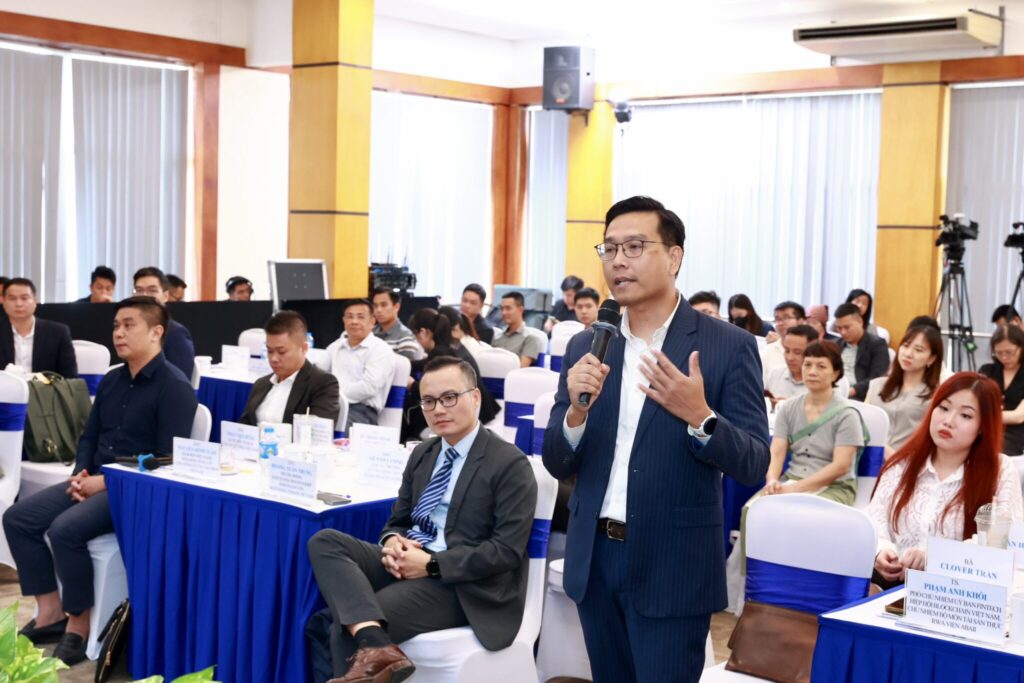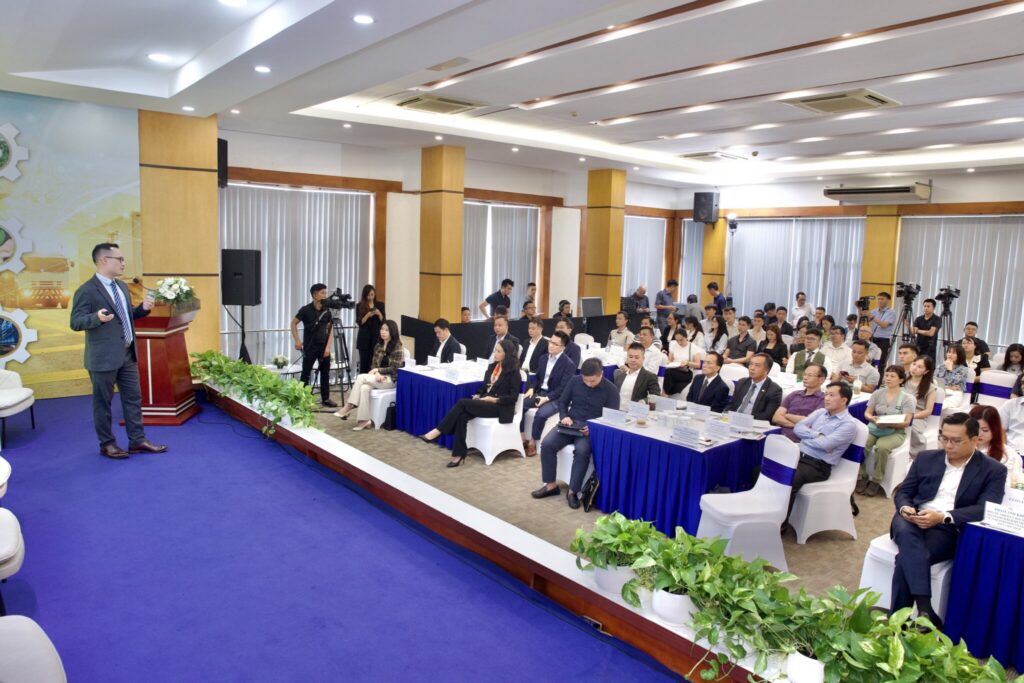“RWA (Real-World Assets) are backed by real assets, combined with quick cross-border transaction capabilities of blockchain technology. RWA enhances asset transparency, increases global liquidity, reduces transaction costs, and allows investors to easily diversify their portfolios,” emphasized Dr. Phạm Anh Khôi, Vice Chairman of the Fintech Committee, Vietnam Blockchain Association.

RWA: A Leading Trend in the Digital Economy
At the seminar “Exploring Investment Opportunities in the Second Half of 2024,” which took place at Báo Đầu tư in late July and was attended by numerous individuals and investment funds, Dr. Phạm Anh Khôi (Vice Chairman of the Fintech Committee, Vietnam Blockchain Association; Head of the RWA Real-World Assets Department, ABAII Institute of Blockchain & Artificial Intelligence) shared insights on investment opportunities in tokenized real-world assets (RWA) and the growth prospects of this new asset class.
RWA is one of the four asset types that make up the overall digital asset market, alongside three other types: Crypto Assets, Virtual Assets, and Central Bank Digital Currency (CBDC).
While Crypto Assets or Virtual Assets may not be backed by real-world assets and CBDCs are exclusively issued by central banks, RWAs offer significant advantages: they are secured by real-world assets, utilize blockchain technology for fast, cross-border transactions, and can be issued by various financial institutions, providing greater flexibility and diversity.
Additionally, RWAs enhance asset transparency, increase global liquidity, reduce transaction costs, and make it easier for investors to diversify their portfolios.
“Therefore, RWAs are considered a promising asset class, deserving of attention from individuals and investment funds soon,” Dr. Phạm Anh Khôi emphasized.
According to a report by Boston Consulting Group, the market for tokenized real-world assets (RWA) is projected to reach $16 trillion, equivalent to 10% of global GDP by 2030. This market could even double, reaching $30 trillion in the following four years.
“RWAs are expected to help individual investors and funds diversify their portfolios, as nearly any asset or commodity of value can be tokenized, from artworks, construction projects, and real estate to intangible products like copyrights and intellectual property,” Mr. Khôi shared.

Digital Assets: A Breakthrough Growth Opportunity for the Economy
According to Mr. Khôi, digital assets in general, and RWAs in particular, represent a valuable opportunity to get ahead of new growth trends, helping developing countries like Vietnam integrate into the global capital market. The amount of cryptocurrency transferred into Vietnam over one year, up to June 2023, reached $120 billion, five times higher than the $25 billion brought into Vietnam through FDI. However, due to the lack of a legal framework to manage digital and virtual assets, this entire amount remains poorly controlled, resulting in lost tax revenue and leading to other issues such as anti-money laundering measures and user protection. If we can implement strict policies to manage VA (Virtual Assets) and VASP (Virtual Asset Service Providers) soon, this capital flow could become a powerful driver to boost the economy.
However, Dr. Phạm Anh Khôi also advised investors entering the digital asset space, including RWAs, to be well-prepared with knowledge and understanding of the financial, technological, and legal markets. He emphasized the importance of consulting with experts and leading organizations, continually assessing and updating risk assessments regarding market volatility and regulations, selecting reputable trading platforms, and, most importantly, having a clear investment strategy and diversifying portfolios to minimize risks and maximize benefits.
During the seminar, investors and guests, along with Dr. Nguyễn Trí Hiếu (Institute for Research and Development of Global Financial & Real Estate Markets), Dr. Lê Xuân Nghĩa (Member of the National Financial and Monetary Policy Advisory Council), Mr. Lê Đức Khánh (VPS Securities), Mr. Trần Tuấn Tài (Sơn Kim Retail), Mr. Võ Hồng Thắng (DKRA Group), Ms. Lina Nguyễn (Exness Investment Bank), and Mr. Lê Trọng Minh (Editor-in-Chief of Báo Đầu tư), discussed the market fluctuations and factors affecting the investment market in the second half of the year, as well as the outlook for specific investment sectors.
